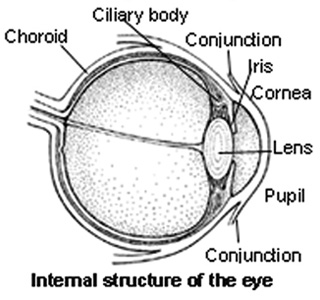

This could allow us to essentially cure blindness. Since doctors and scientists understand the eye fairly well, there is some hope we could one day fully build our own device to interface with the brain in the same way. These electrical signals are sent via the optic nerve to the brain’s visual cortex, where the brain then turns those signals into what we see. The lens of the eye focuses that light onto the retina, which is covered with a series of special photoreceptor cells that turn that light into signals. To see, our cornea refracts incoming light, with the iris controlling the size of the pupil to optimize incoming light as needed. It consists of the systems needed for the eye to take care of itself (again, barring serious damage) and the ability to move to look at what you want to see. This abundant blood supply is implicated in uveitis, as inflammatory mediators enter the eye through this vascular network.The eye has many parts that work together to provide you with vision. The uvea of the eye is a crucial mediator of nutrition and gas exchange, as blood vessels course through the ciliary body and iris, while the choriocapillaris in the posterior eye help support the retina. At the end of the visual process, as rays of light bend through the cornea and lens, photon energy is converted to neurochemical action potentials by cells of the retina, which then send these impulses to the brain, via the optic nerve. The remaining one-third of refraction is performed by the lens, which is functionally adjustable through the action of the zonular fibers and ciliary muscles. The cornea serves a protective role and is responsible for two-thirds of the refractive properties of the eye. Internal parts of the eye have primarily structural and visual functions. Eyelashes are finely sensitive to touch and warn the eye of possible debris and particles that may cause injury.
/eye-close-up-173505157-5a26c6a3e258f8003b57da63.jpg)
The eyelid prevents foreign bodies from entering the inner eye and helps refresh and distribute the tear film by blinking. The essential role of the external eye structures is to protect the delicate tissue of the internal eye. The layers of the eye perform distinct functions which coalesce to create a unified, perceptual experience.


 0 kommentar(er)
0 kommentar(er)
